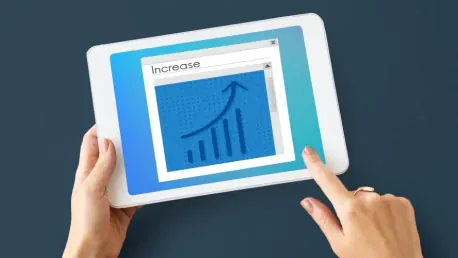The Australian internet advertising market is experiencing significant and dynamic growth in 2025, as revealed in the IAB Australia Internet Advertising Revenue Report (IARR) for the year. With an impressive 11.1% year-on-year increase, the market has reached a staggering value of $16.4 billion. This expansion highlights the evolving nature of advertising in the digital age and underscores the critical role of internet platforms in modern marketing strategies.
Growth Trends in Advertising Formats
Video and Search Dominate
Video advertising is emerging as a major growth driver within the Australian internet advertising landscape. The investment in video advertisements has surged by 19.6%, culminating in a total expenditure of $4.5 billion. This remarkable increase is partly due to the high engagement levels and visual appeal of video content, making it particularly popular among advertisers. Additionally, video displayed on social platforms now accounts for over one-third of the total video expenditure, surpassing both BVOD (broadcast video on demand) and other types of video formats.
Another significant pillar of growth is search and directories, which have grown by 10.1% to reach $7.2 billion. This rise indicates that search engine marketing continues to be a foundational element of online advertising, driven by its ability to target consumers actively seeking information or products. The overall uptick in these key areas reflects advertisers’ strategic shift towards more interactive and consumer-centric ad formats.
Classifieds and Display Ad Performance
Classified advertising, often considered a traditional format, has not been left behind in this digital evolution. This segment experienced an 8.3% increase, bringing its total to $2.6 billion. Classified ads have adapted to digital platforms efficiently, maintaining relevance in an increasingly online-oriented marketplace. These advertisements are crucial for sectors like real estate, automotive, and job listings, where detailed product or service descriptions are essential.
Conversely, display advertising formats that exclude video content have exhibited more modest growth. With a 1.7% increase, the display segment reached $2 billion, suggesting that while there is still value in traditional banner ads, they are being overshadowed by more dynamic formats. Interestingly, audio advertising expenditure demonstrated notable growth, rising sharply by 17.8% to $313 million. This surge points to a growing appreciation for audio formats such as podcasts and music streaming, where advertisers can effectively capture the listener’s attention.
Impact of Major Events and Platform Distribution
The Olympics Effect
The surge in video advertising investment was significantly fueled by major events such as the Olympics in the third quarter of 2024. These global sports events provided an unprecedented opportunity for advertisers to engage massive, diverse audiences. The convergence of audiences around such high-profile events amplifies the effectiveness of video ads, as they benefit from heightened viewer attention and emotional engagement associated with sports.
Moreover, the influx of advertising tied to the Olympics helped drive innovations and elevated content quality, ultimately boosting viewer satisfaction and ad performance. This symbiotic relationship between major events and advertising investments underscores the value of strategic timing and contextual relevance in digital marketing.
Connected TV: A New Peak
Connected TV (CTV) has reached a new pinnacle, now making up 51% of content publishers’ video inventory expenditure. This shift indicates a broader trend towards digital and on-demand viewing experiences, with audiences increasingly favoring connected devices over traditional cable TV. The rise of CTV aligns with advertisers’ efforts to target viewers with precision and flexibility, leveraging the interactive features that CTV platforms offer.
As a result, traditional mobile and desktop expenditures have seen a decline, suggesting a shift in viewer habits and a need for advertisers to adapt their strategies accordingly. The growing prominence of CTV demonstrates how the digital advertising landscape is reshaping around technological advancements and changing consumer preferences.
Buying Types and Industry Revenue Distribution
Diverse Buying Types
Regarding the methods of purchasing display inventory, the market has shown a balanced approach. Internet advertising via agency insertion orders has remained stable at 44%, indicating continued reliance on agencies to manage and execute ad campaigns. Meanwhile, client direct buying stands at 17%, reflecting the proportion of businesses managing their ad spending in-house for greater control and potentially lower costs.
Programmatic buying, where ads are automated and auction-based, accounts for 39% of the purchasing methods. This form of buying emphasizes efficiency and real-time bidding, allowing advertisers to optimize their spending dynamically. The diverse distribution of buying types indicates a robust and flexible market where different strategies can coexist and flourish.
Revenue Breakdown by Industry
Retail continues to lead the display advertising industry categories with a dominant 17.1% share. The retail sector’s strong reliance on digital platforms for driving consumer engagement and sales is evident here. Following closely, the automotive industry holds a 14.8% share, leveraging digital ads to showcase new models, features, and promotions.
Finance, while slightly decreasing to an 8% share, still remains a significant player. The finance sector includes a broad range of services from banking to insurance, reflecting a consistent need for consumer awareness and trust-building through advertising. This breakdown demonstrates a varied yet consistently expanding market where different industries successfully leverage digital advertising to reach their target audiences.
December 2024 Quarter Overview
Quarterly Revenue Insights
The IARR also provides a detailed snapshot for the December 2024 quarter, revealing an 8.8% increase in total revenue to $4.258 billion. Within this period, search and directories grew by 8.8%, underscoring their ongoing relevance in reaching active consumers. Meanwhile, non-video general display advertising saw a slight decline of 2.4%, suggesting a potential reevaluation or shift in focus by advertisers toward more interactive formats.
Classifieds experienced marginal growth of 0.1%, maintaining stability, while video advertising growth soared by 19.2%. This further emphasizes the impact and importance of video content in contemporary advertising strategies. Audio advertising also increased significantly by 15.1%, continuing its strong upward trajectory seen throughout the year.
Industry-Specific Trends
In terms of specific industries for the quarter, automotive advertising saw its share drop to 17.3%, a notable decline compared to previous periods but still reflective of substantial investment. Retail followed closely at 14.6%, maintaining its strong position as a leading category. Additionally, the entertainment, FMCG (fast-moving consumer goods), and finance sectors saw slight increases, indicating diversified contributions to the overall market growth.
This detailed quarter-by-quarter breakdown provides valuable insights into the market’s dynamism and adaptability. The fluctuations and trends highlighted here reinforce the need for advertisers to stay agile, continuously reassessing their strategies to align with evolving consumer behaviors and technological advancements.
Future Considerations and Industry Resilience
The Australian internet advertising market is witnessing substantial growth in 2024, as highlighted in the IAB Australia Internet Advertising Revenue Report (IARR) for the year. The market has surged by an impressive 11.1% compared to the previous year, reaching an astonishing value of $16.4 billion. This remarkable expansion showcases the evolving landscape of advertising in the digital era and emphasizes the crucial role that internet platforms play in contemporary marketing strategies. Digital advertising continues to influence how businesses engage with their audiences, capitalizing on trends such as personalized ads, data-driven marketing, and the rise of social media platforms. This transformation in advertising methods aligns with the global shift towards online and mobile consumption, indicating a robust, thriving sector. As consumer behavior increasingly gravitates toward digital channels, businesses are more reliant on internet advertising, reflecting its undeniable importance in the current marketing ecosystem.









